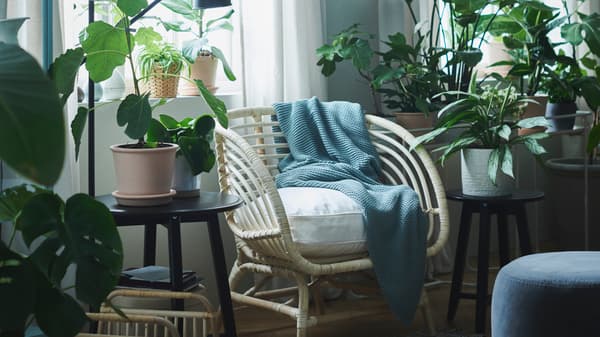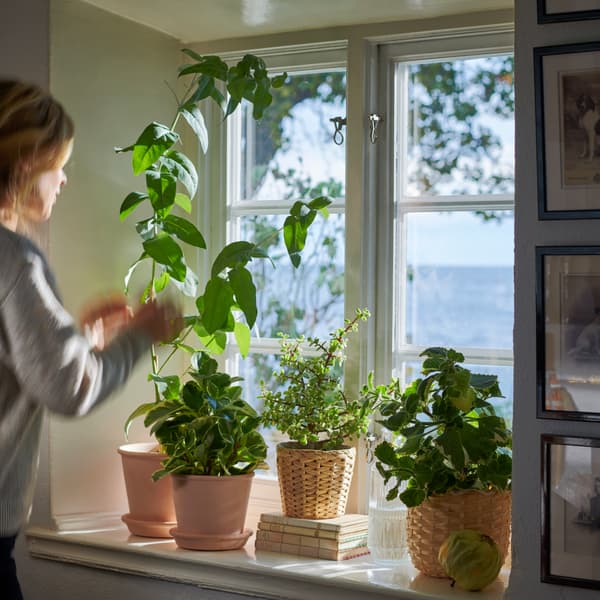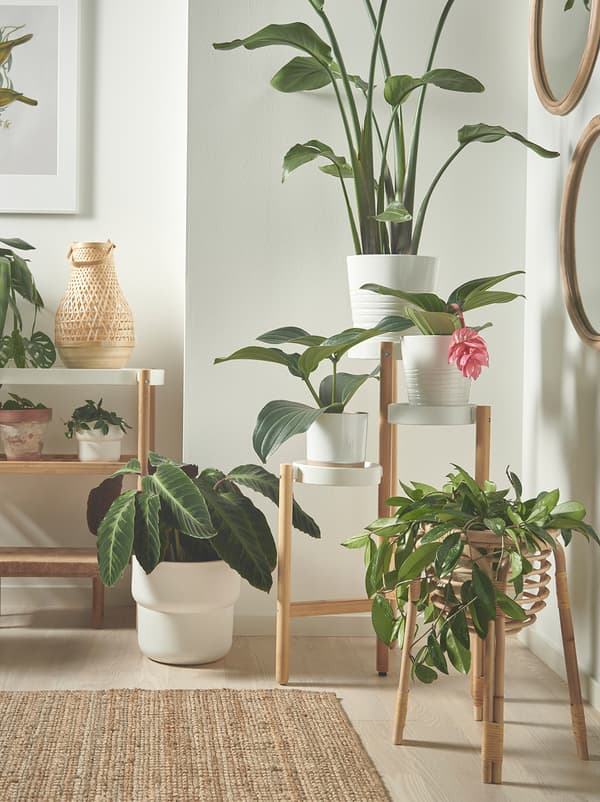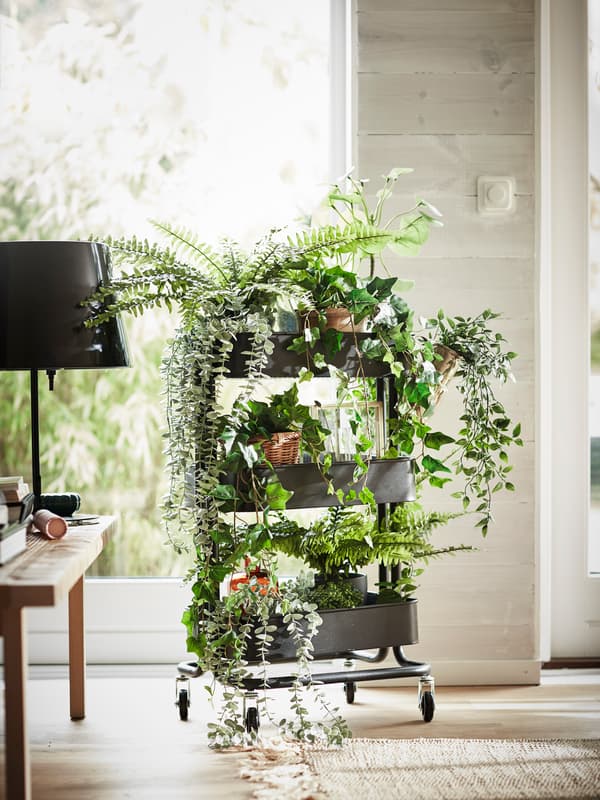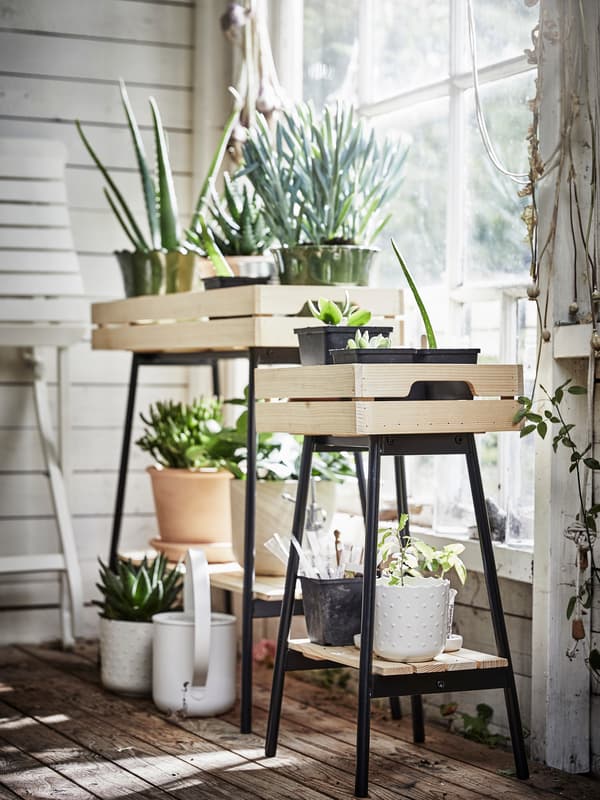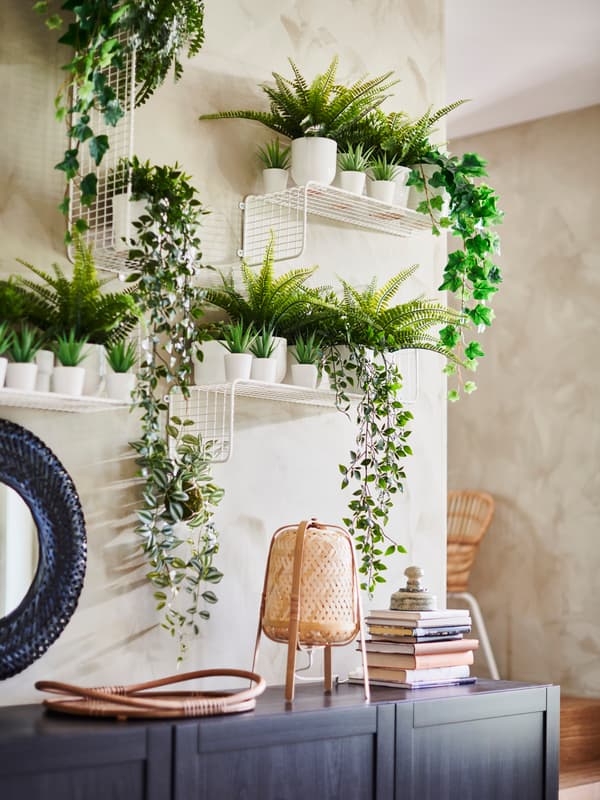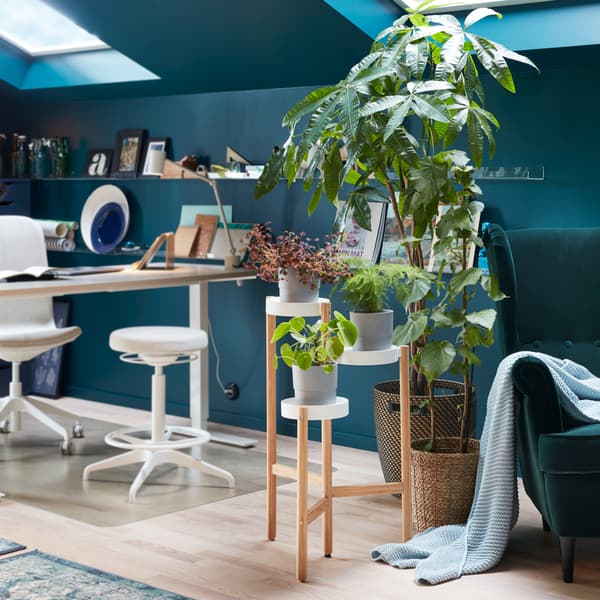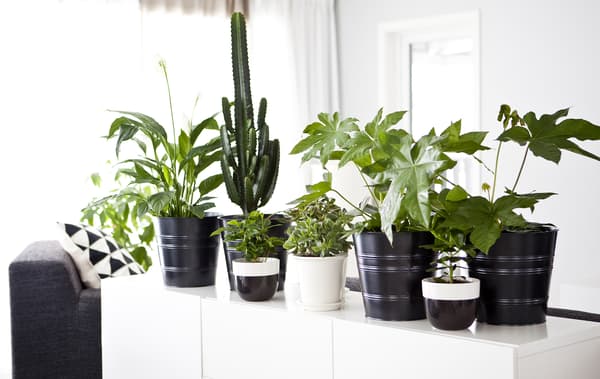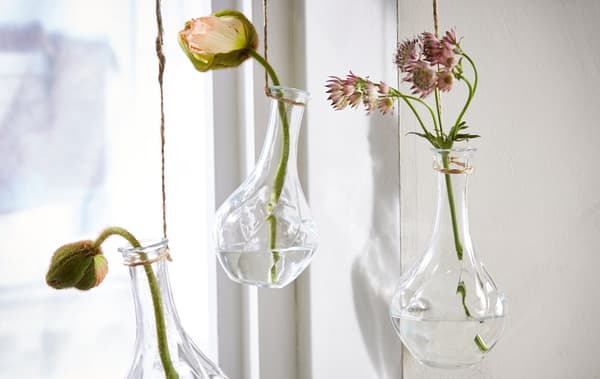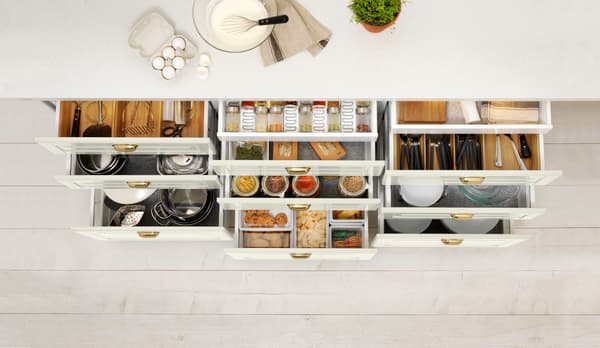How to arrange plants at home
Do you ever wonder where to put your plants at home? It's true that not every corner is the ideal place for our house plants to survive and grow. Though, if there's enough natural light in the space, the most important thing is already there.
If you want to know how to arrange your plants in the living room, kitchen or any room of the house, take a look at our suggestions!
The best spot: windowsills
Windows are the best spot for your house plants because they'll always get whatever light they need to grow. But remember! Not all plants need the same amount of light. If you're buying a new plant, always look at the care label or ask the store manager how to look after it (light and temperature) as some plants need more shade or don't want to be in direct sunlight.
Once you've identified the plants that need light, you can put a few of them on the windowsill in the kitchen, living room etc. Ferns and bamboo want moisture, for example, so a good place to put them is on a bathroom shelf or windowsill. And did you know that plants and vegetation have a beneficial effect on our emotional well-being at home? Architect Juan Luis Higuera-Trujillo told us the secrets of neuroarchitecture in our online programme "Formando hogar" (Making a home).
Make use of the corners and alcoves in your home
If you don't have a windowsill, you can always use hanging planters or plant stands, or put them on a stool or side table grouped together in different sizes.
You should position these decorative plants near a window or direct light source, but if you want to brighten up the more shady corners of the house like corridors or staircases, go for ferns or a raffia palm.
Where to put your plants in the living room
Any room in the house is good for plants as they purify the air and increase oxygen in the atmosphere. As we said before, once you know how much temperature and light your plant needs, just choose a planter that fits with the decor of your living room. The green tones of plants go really well with wood and decorative accessories made of natural fibres, such as rattan or bamboo, as they recreate all the living elements of nature indoors.
Plants that are best suited to indoor spaces like the living room and that don't need much care include pothos, spider plants, monsteras, ficus or succulents. Climbing plants such as ivy are also perfect if you place them high up on shelves or in hanging planters. They don't usually need much light or water, so if you water them every one or two weeks, that should be enough.
Plants in the office
As we heard in the "Formando hogar" video, architect Juan Luis Higuera said that plants and vegetation in the home can have a therapeutic effect and even foster creativity or help provide a relaxing environment. As he said, it's what's known as biophilia; in other words, the connection humans need to have with nature.
Many studies also support the impact that plants and vegetation have on our work spaces, so it's worth putting a planter on your desk, a nearby shelf or on the floor. Not only will it brighten up your space, it will fill it with colour, life and joy. What more motivation do you need?
If you liked these ideas and tips, you must be a plant lover, so here are some other articles about how to decorate with plants that you're sure to enjoy:
We love it when customers use our products in a creative way. Why not try to do something new with them yourself? But do remember, any modifications or changes that you make to IKEA products will prevent them from being resold or used for their original purpose, thus invalidating IKEA product warranties and your right to return them.
